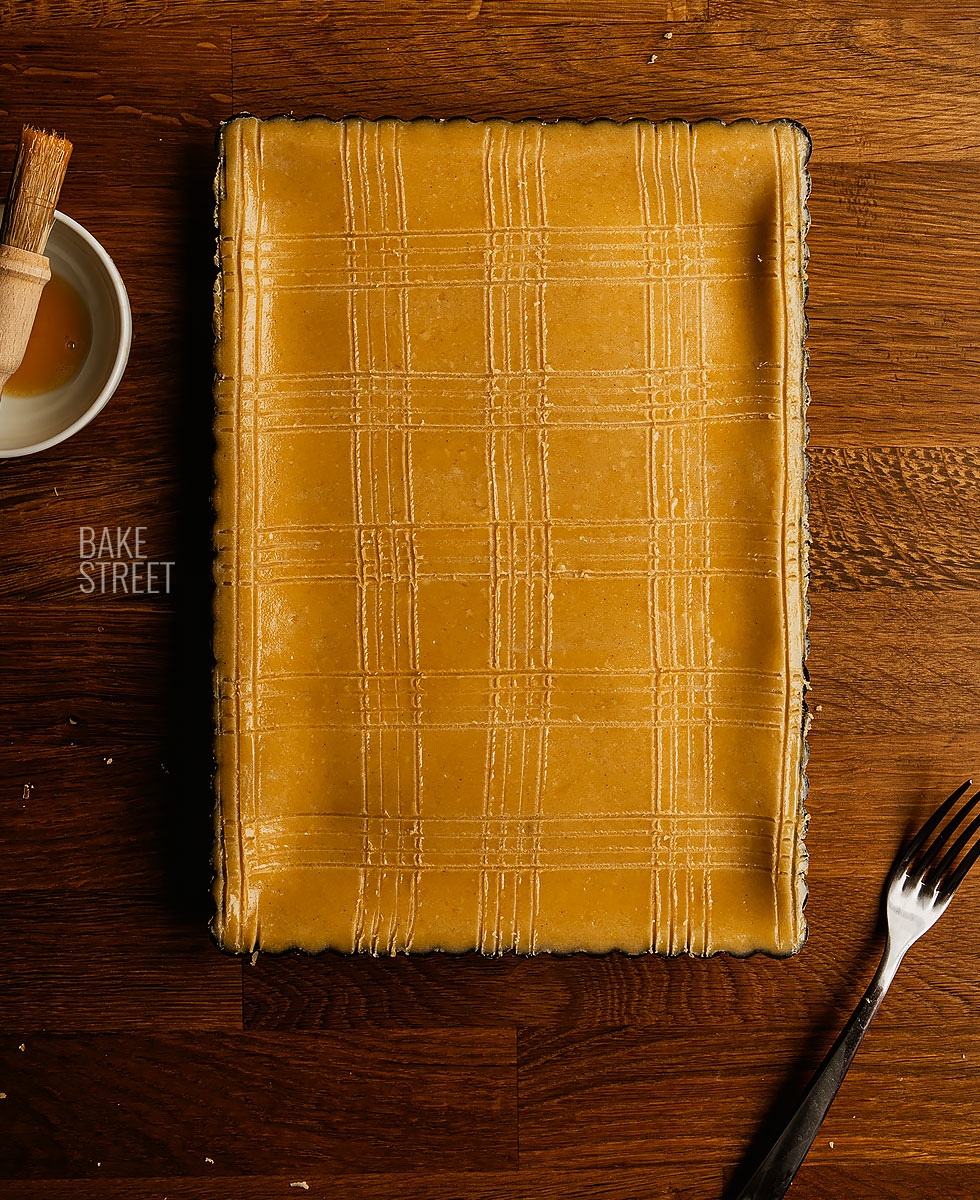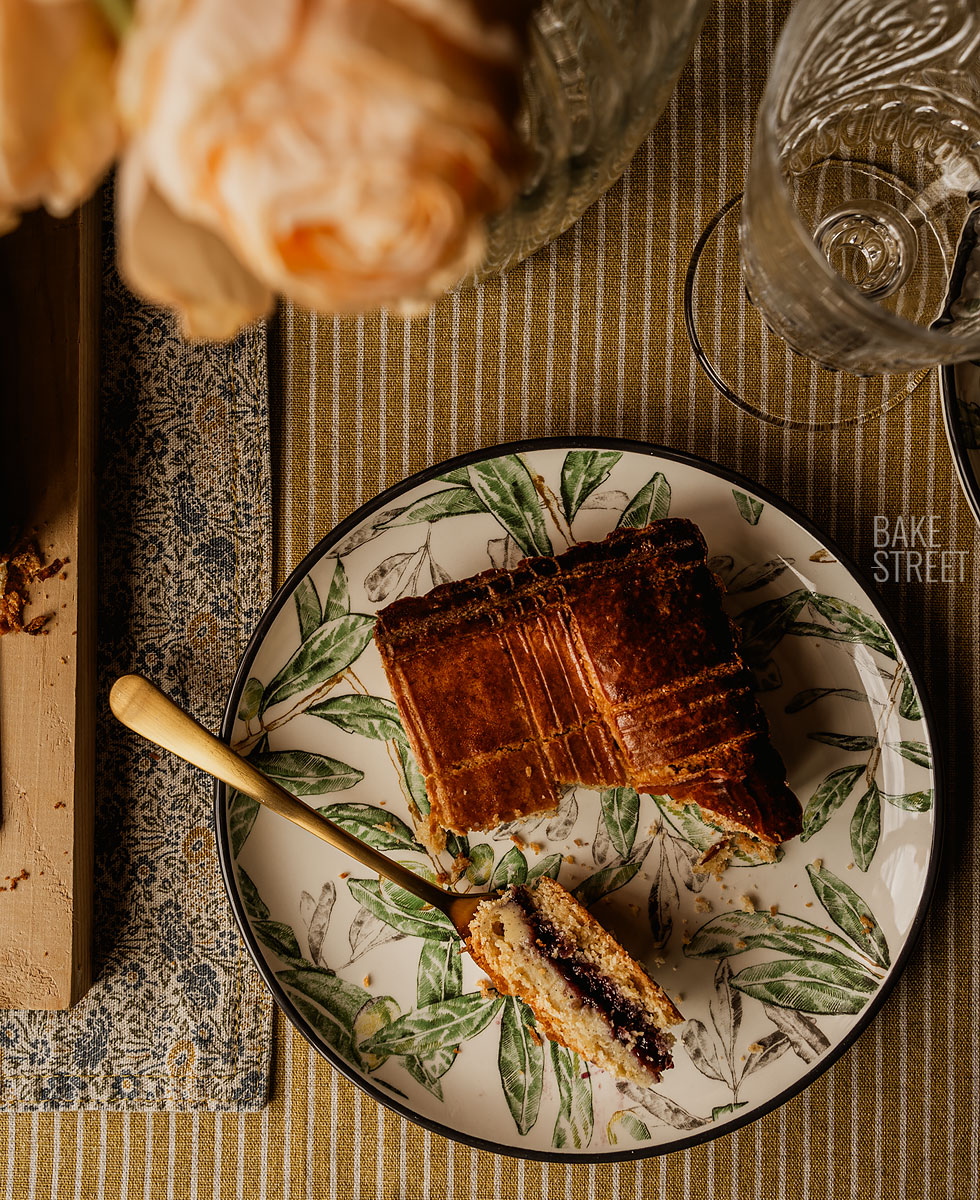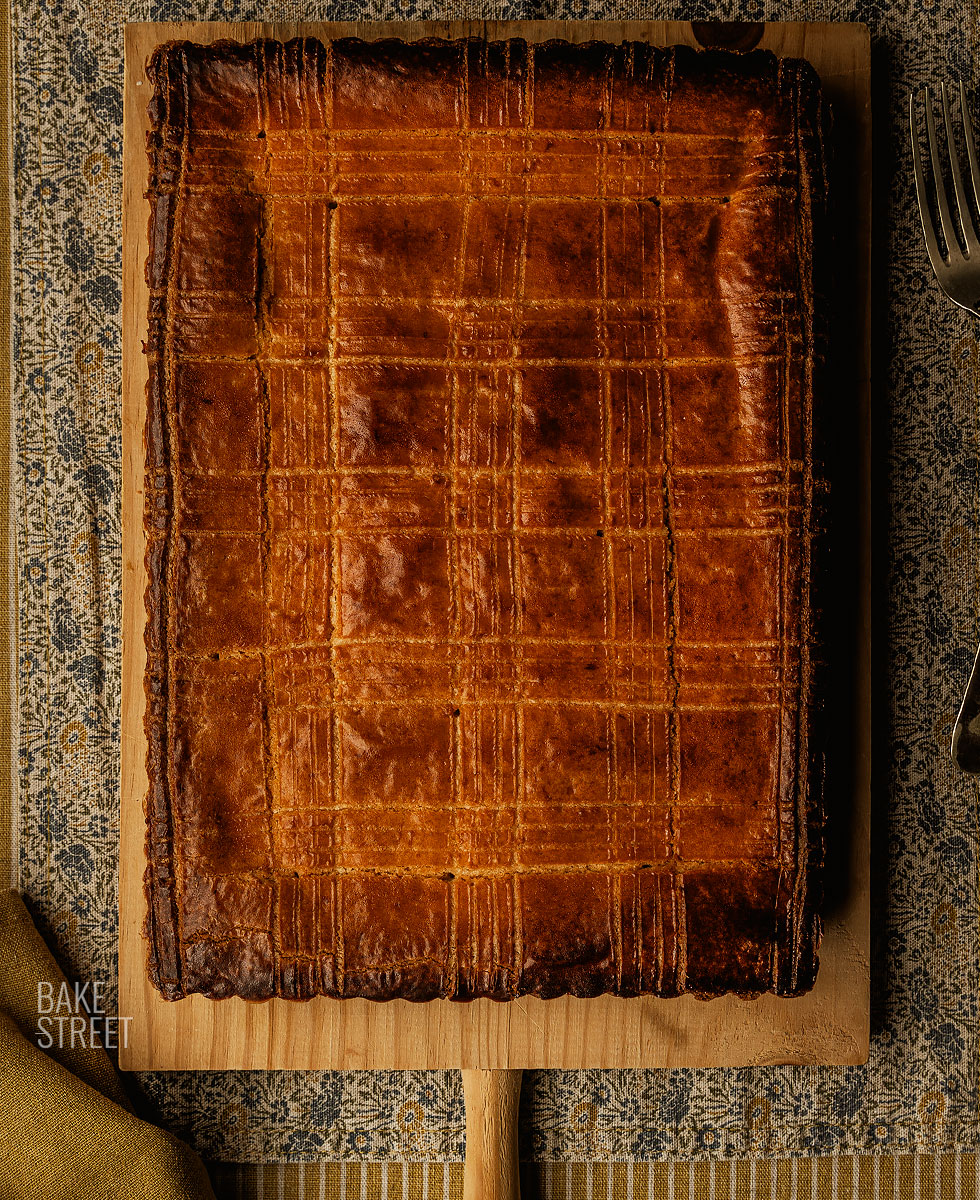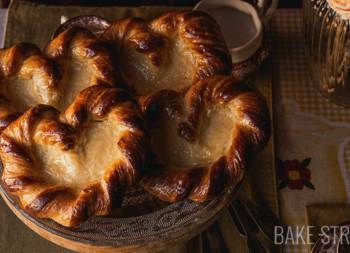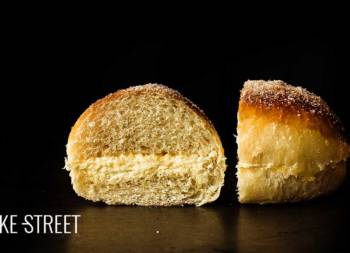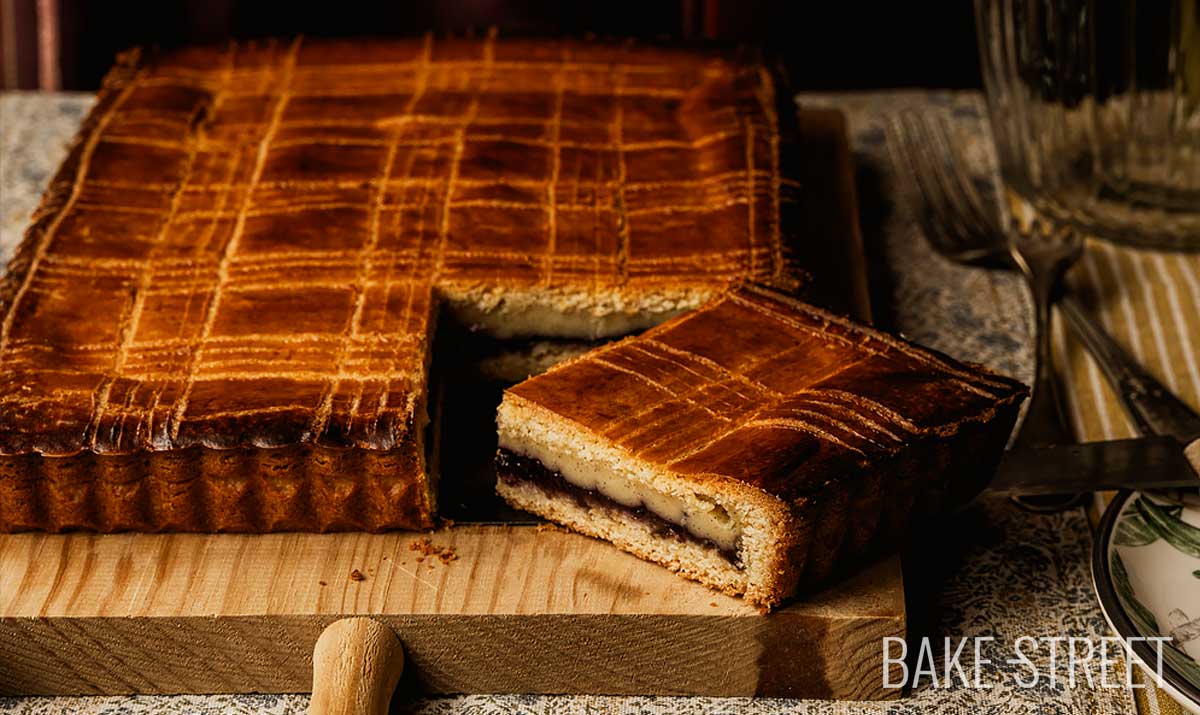
Gâteau Basque
For a long time I have wanted to bring you the recipe for this simple and spectacular Gâteau Basque. We often tend to complicate our recipes thinking that the more laborious the recipe, the better the result. Certainly, in some cases this may be the case, but in many cases it is not necessary. And today we can see an example.
Looking at this recipe, it may remind us of a custard pie and, to be honest, I think that this definition is not far off the mark. It just looks that way on the surface.
Origin of Gâteau Basque.
Once again, we delve into the mystery of the origin of a culinary delicacy: Gâteau Basque. Some claim that the recipe originated in Cambo-les-Bains, at Marianne Hirigoyen’s Pâtisserie, in the mid-19th century. Others claim that it was in Saint-Pée-sur-Nivelle, at the Maison Péreuil, where it has been made with the same recipe since 1876.
Some even point to places such as Saint-Jean-de-Luz, Biarritz or Sare, where today you can find a museum dedicated to the Gâteau Basque. The controversy also revolves around whether the “canonical” Gâteau Basque is the cream cake, which ingredients are essential or whether adding jam is culinary heresy.
The choice to organise the Fiesta de la Torta Vasca (Torta Vasca Festival) in the town of Cambo is no coincidence. Cherry Karrika Street in Cambo, around 1900, is where we find the oldest traces of “Biskotxak“, originally family-made and later handmade. A postcard from 1902 shows a large labour-style house in the Cherry Karrika district, where a small shop can be seen with a sign that specifies “Patisserie Marianne”, run by Marianne Hirigoyen since 1832, the year of her marriage to Bernard Dassance.
It is to Marianne Hirigoyen, a native of Hélette, that we owe the family recipe for Basque pastry, which she in turn received from her mother. During the Restoration, the Cambó spa attracted many visitors, including Bayonne, Landes and some Spaniards.
In 1821, Jean Fagalde, the spa’s farmer, built an elegant establishment consisting of a half-roundabout linked to two main quadrangular buildings. Cambó’s clientele increased during the Second Empire; in 1856 there were 1,600 “summer visitors” from April to November.
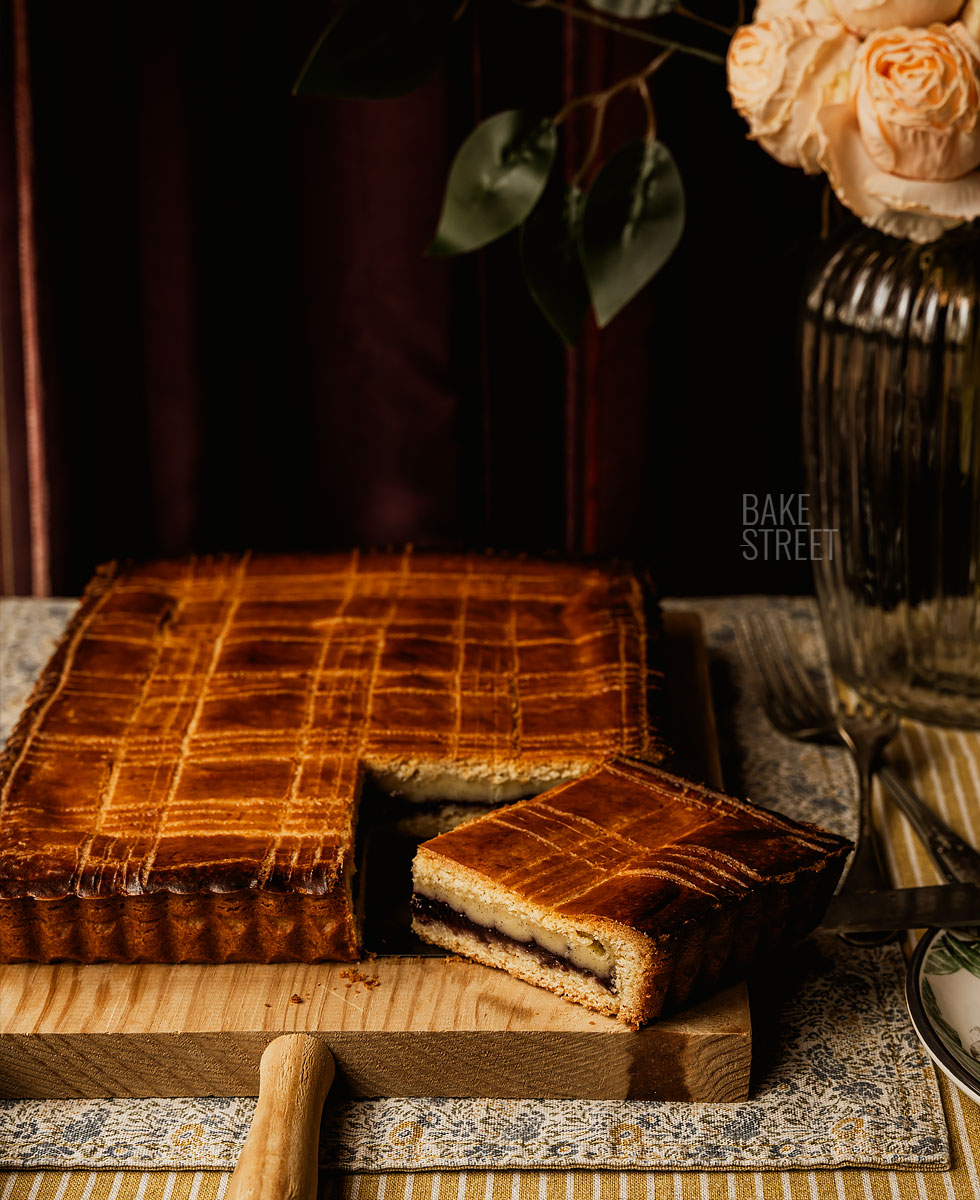
Marianne Hirigoyen ran her patisserie for half a century.
With the help of her daughter Marie, married in 1871 to Pierre Dibar. Marianne, who ran the Cambo-les-Bains patisserie from 1832, was nicknamed “the Basque of cakes” during her visits to the Bayonne market. Initially known as the ‘Cambo cake’, she seems to have given the Gâteau Basque its present name thanks to the nickname of Madame Hirigoyen.
At the beginning of the 19th century, the Marianne patisserie was run by Marianne Hirigoyen’s granddaughters, the Dibar sisters, nicknamed ‘The Biskotx Sisters‘. For thirty years, these two picturesque figures walked with their baskets full of cakes along the church street to sell them in a shop in Gasteluberria. The younger, Elisabeth, died in 1939 at the age of 58, while the elder, Anne, passed away in 1955 at the age of 83 after passing on the secret of her recipe to the local pastry chef called Ingres.
Its Basque name, ‘etxeko bixkotxa‘, literally translated as ‘house cake’, suggests a recipe rooted in the family. The most widespread version attributes its creation to Marianne Hirigoyen, pastry chef of the only pastry shop in the spa town of Cambo-les-Bains.
It was in the late 19th and early 20th centuries that Gâteau Basque began to gain ground in the trade, first in local bakeries. Initially known and marketed locally, it was in the 1940s, thanks to the boom in coastal tourism, that Basque cake gradually began to achieve the success it has today.
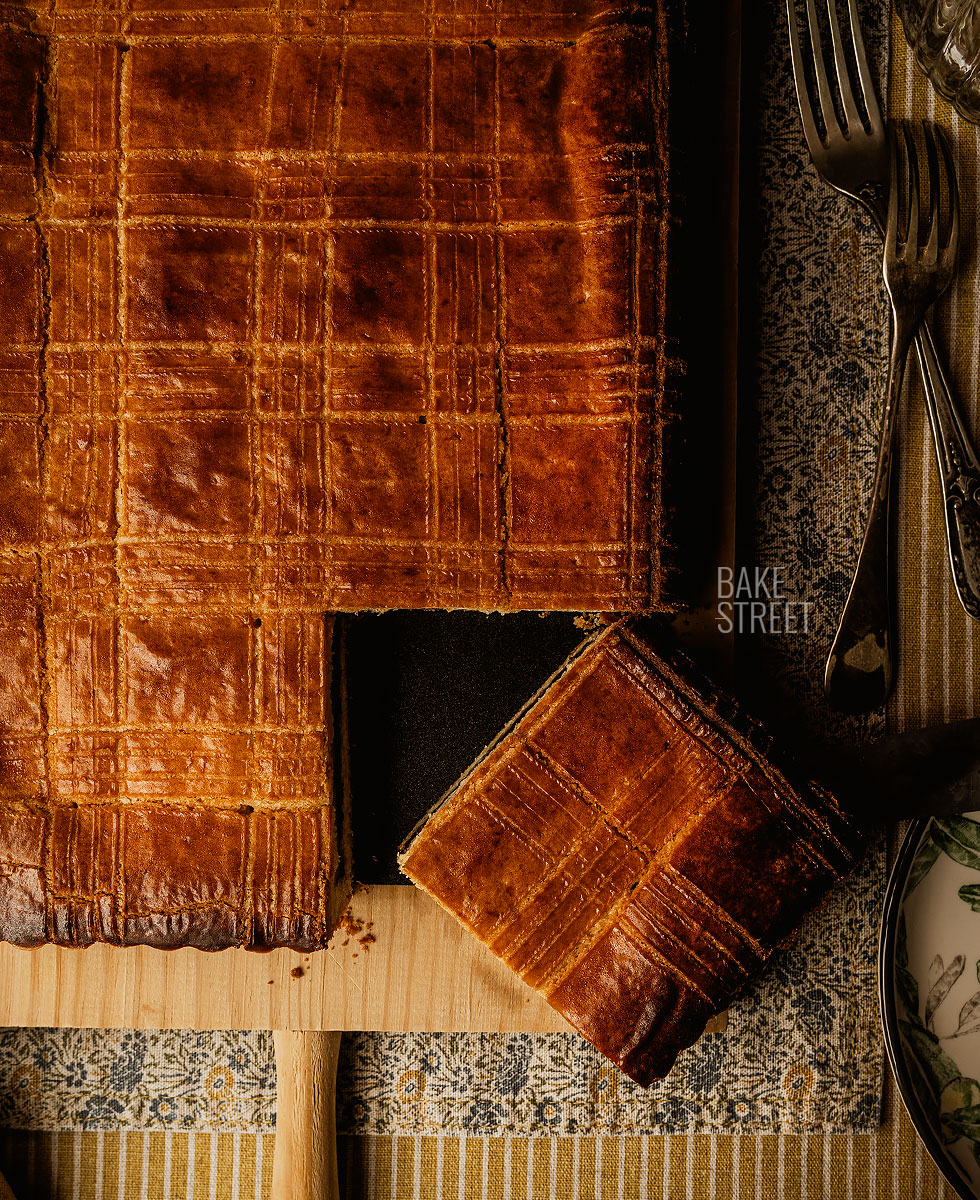
Maison Adam’s Gâteau Basque.
It is the only Basque cake decorated with the Basque cross, or “lauburu” cross, made of shortbread biscuit dough, created by Jean-Pierre Telleria. It has a patent that makes it unique and recognisable among all the Basque cakes on the market.
This patisserie presents this Basque cake in several formats; its simplest form filled with pastry cream, decorated with a black cherry in its black cherry Basque cake, with a walnut in its apricot/walnut Basque cake and finally chocolate colour in its chocolate Basque cake.
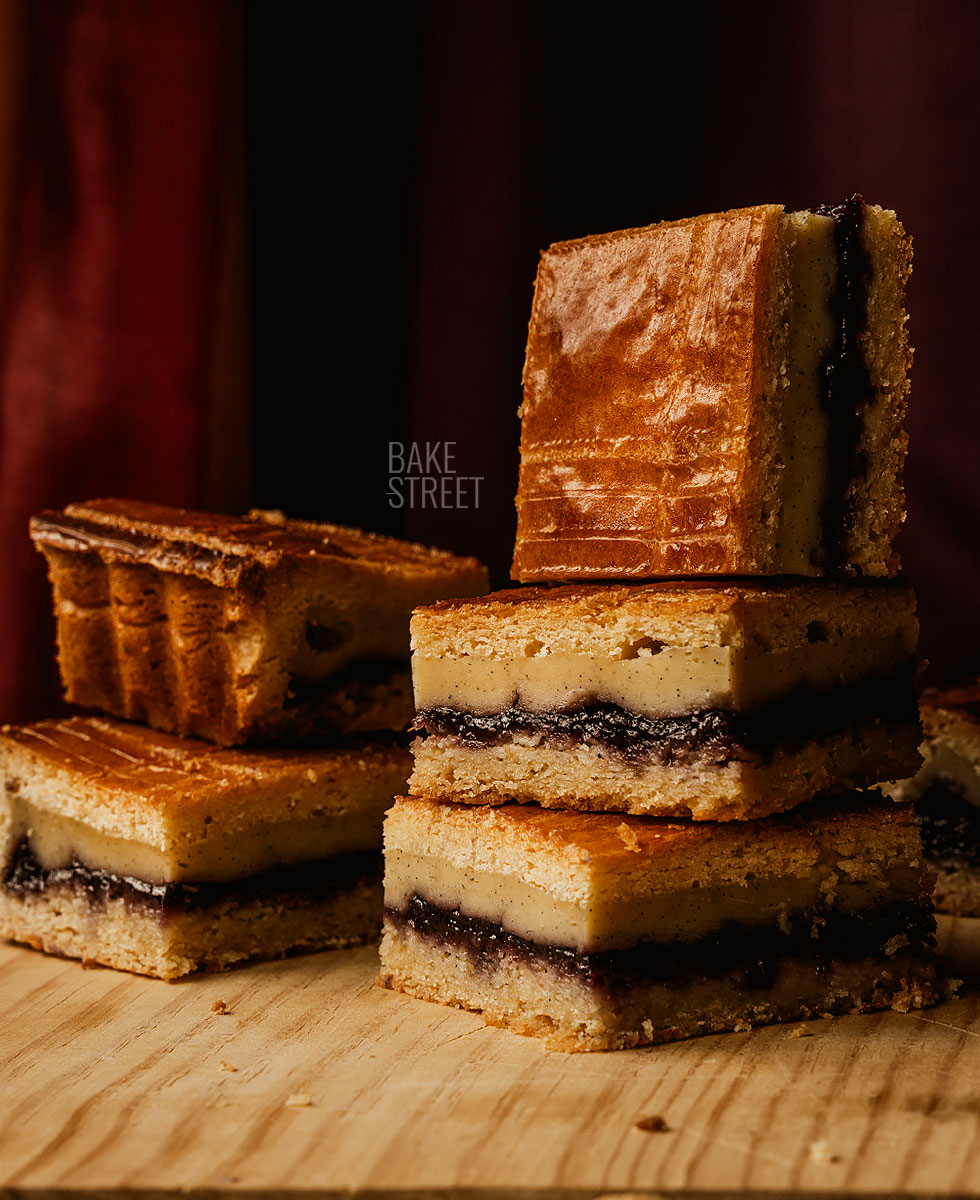
How to make the traditional Gâteau Basque?
As I mentioned at the beginning, it is a very simple recipe, but spectacular. A shortcrust pastry that, if you have the time and desire, I recommend making it by hand to enjoy the process more intensely. It is very easy and rewarding to make. The filling can consist of one or two elements; traditionally it is always made with custard.
The combination of shortcrust pastry and custard is always a success, as in this peach and custard pie.
For my part I leave you with this version, at the risk of not being the traditional one, but which I guarantee is absolutely delicious and spectacular. A buttery dough, with a crunchy exterior and full of aromas and flavours that combine with a base of jam, in my case blueberries, and a custard, with lots of vanilla, and an ideal consistency so that when cut, it keeps its shape. A mouthful of Gods.
Gâteau Basque recipe
SHORTCRUST PASTRY:
- 500 g flour T45 or bread flour
- 250 g unsalted butter, cold
- 250 g powdered sugar
- 7 g baking powder
- 1 egg + 4 egg yolks, large
- zest of one lemon
- 2 tsp vanilla
- 4 g salt
PASTRY CREAM:
- 400 g whole milk
- 135 g whipping cream
- 4 egg yolks, large
- 135 g sugar
- 50 g corn starch
- 2 teaspoons natural vanilla extract
- 45 g unsalted butter, room temperature
FOR FILLING AND BRUSHING:
- 200-240 g cherry or blueberry jam
- 1 beaten egg yolk for brushing
MATERIAL WE WILL NEED AND VISIBLE IN THE VIDEO:
- bowls
- silicone spatula
- digital kitchen scales
- pastry spatula
- teflon or silpat sheets
- 28 x 18 cm ribbed mould, removable
- large rolling pin
- small rolling pin with handle (optional)
- grater
- pastry brush
- cooling rack
Instructions
Prepare pastry cream.
- Pour the milk and cream into a saucepan. Place over medium heat and let it come to a gentle boil.
- Meanwhile, in a bowl, beat the egg yolks with the sugar and the cornstarch, previously sifted, until completely homogenized.
- Once the milk has come to the boil, pour a little of it over the yolk mixture.
- Whisk quickly to temper the yolks and prevent them from curdling into lumps.
- Add the rest of the milk little by little and mixing very well each time.
- Pour the mixture back into the saucepan and place over medium-low heat, stirring constantly. You will notice that the texture will become thicker, but it will take a while. Patience.
- Once the cream has a creamy texture, it is ready.
- Pour into a bowl (the larger the better because it will cool faster).
- Cover with cling film to prevent it from setting and let it cool completely.
- If you wish, you can make it the day before and refrigerate it until the next day.
Prepare shortcrust pastry.
- Add the cold butter cut into cubes together with the icing sugar, flour, baking powder, salt and lemon zest in a bowl.
- Mix with the help of your hands until you get a sandy texture. There may be a little bit of butter left over, but that's okay, it's fine.
- Make a well in the centre and add the eggs. Mix until the dough comes together and compacts.
- Transfer the mixture to a work surface and knead using the fraisage* technique to amalgamate the dough and integrate the ingredients. Do not over-knead as we are not interested in developing gluten in this case.
- Weigh the dough and divide it into two parts; 60% of the dough will be used for the base of the Gâteau Basque and the other part will be used to create the top. Wrap the smaller half with cling film to prevent it from drying out.
- Stretch the larger dough between two sheets of teflon, this process will help the stretching and handling process by preventing it from sticking to the work surface.
- Check that the dough is larger than the mould to make sure that when you place it in the mould, it is covered with dough in one piece.
- Roll out the other piece in the same way as the previous one.
- Place the stretched doughs, one on top of the other, and both on a tray.
- Refrigerate for 1-2 hours to firm the dough and make it easier to place in the mould.
- NOTE*: The fraisage technique consists of sliding the heel of your hand over the dough to help the ingredients integrate, preventing the gluten from developing too much. You can see this process in the video below.
Line the mould with the dough and fill it.
- Place the larger dough on the lightly buttered baking tin and fit loosely. If there are any uncovered areas, take scraps of dough and cover these gaps.
- Run a rolling pin around the edges of the tin to remove any excess dough.
- Prick the base of the cake with a fork.
- Spread a generous layer of jam on the base of the tart, spreading it evenly.
- Whisk the custard with a whisk to soften it and transfer into a piping bag.
- Pipe it over the jam, covering the entire surface. Smooth the pastry cream with a pastry spatula.
- Place the other piece of rolled out dough, which should have been refrigerated while you were filling the cake, on top of the mould. Adjust very carefully.
- Run the rolling pin around the edge of the tin to remove the excess and seal the dough well.
- Generously brush the surface of the cake with beaten egg yolk.
Refrigerate for 1-2 hours.
Bake.
- Preheat the oven to 355ºF/180ºC, heat up and down.
- With the help of a fork, create a pattern on the surface of the cake. In the video you can see the process.

- Prick some parts of the surface of the dough with a toothpick to help release the steam during baking and prevent the dough from swelling and the risk of breaking.
- Bake for 40-45 minutes.
- Remove from the oven and leave the cake to cool completely in the mould on a cooling rack.
- Once cooled, unmould and enjoy.

Notes
- To make the shortcrust pastry, you must work with cold butter. If you want to speed up the process of integrating the butter with the flour, you can grate the flour instead of cutting it into cubes.
- The shortcrust pastry process can be carried out in a KitchenAid mixer with the aid of the paddle or flat beater.
- It is important to refrigerate the dough to make it easier to place it in the mould and to give it a cleaner and more perfect finish.
- To roll out the dough, you can either sprinkle a work surface with flour or you can do it as I show you, with teflon sheets. This second method will make it easier to manipulate the dough to transfer it to the mould without breaking it and avoiding adding extra flour (it will change the final consistency of the dough).

- I have used a 28 x 18 cm rectangular ribbed mould. You can replace it with a round baking tin of 24-25 cm in diameter.
- You must be patient when making the pastry cream, it takes a little while for it to get thicker. Do not feel the need to increase the heat to speed up this process, you run the risk of the cream sticking to the bottom and burning. Adding a bad taste.
- The jam is optional, you can use cherry jam, blueberry jam... Or whatever flavour you prefer.
- The surface of the cake is brushed with beaten egg yolk, not with egg. The final appearance is a beautiful golden finish.
- I advise you to refrigerate the cake, once brushed with the egg yolk, to favour the final golden texture.
- It is traditionally decorated with this pattern that I show you in the video or with a Basque cross.
- Once baked, it can be kept refrigerated in an airtight container for 3-4 days.

If you like classic cakes, those that with just a few elements manage to make you smile, then you can't miss this incredible Gâteau Basque.
I think it is practically impossible to find someone who does not enjoy a bite like this. In my case I have made the cake in a rectangular format, as you know that I always like to give it a different twist at some point. But, traditionally I usually make it in a circular shape (in the notes section I leave indications for this type of mould).
I remind you that you can watch all my videos on my YouTube channel. If you subscribe and turn on the little bell, I will be eternally grateful!
I wish you a wonderful Sunday afternoon and happy Easter!
Lots of love,
Eva
Sources: Aquitaine online, Maison Adam

